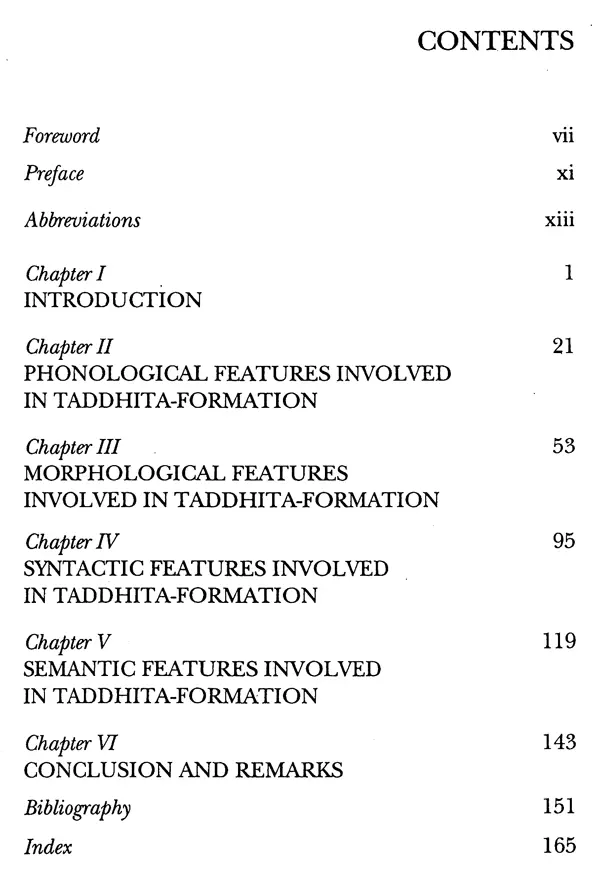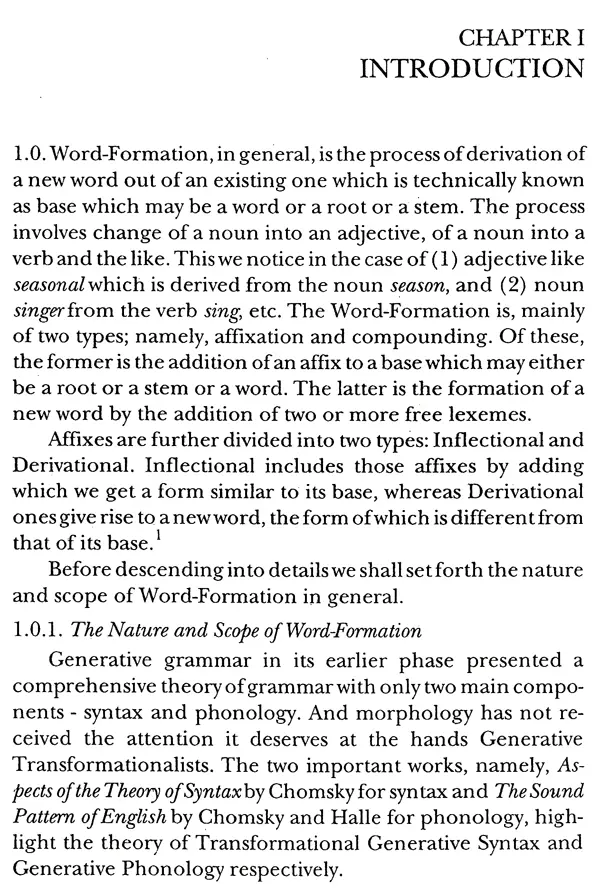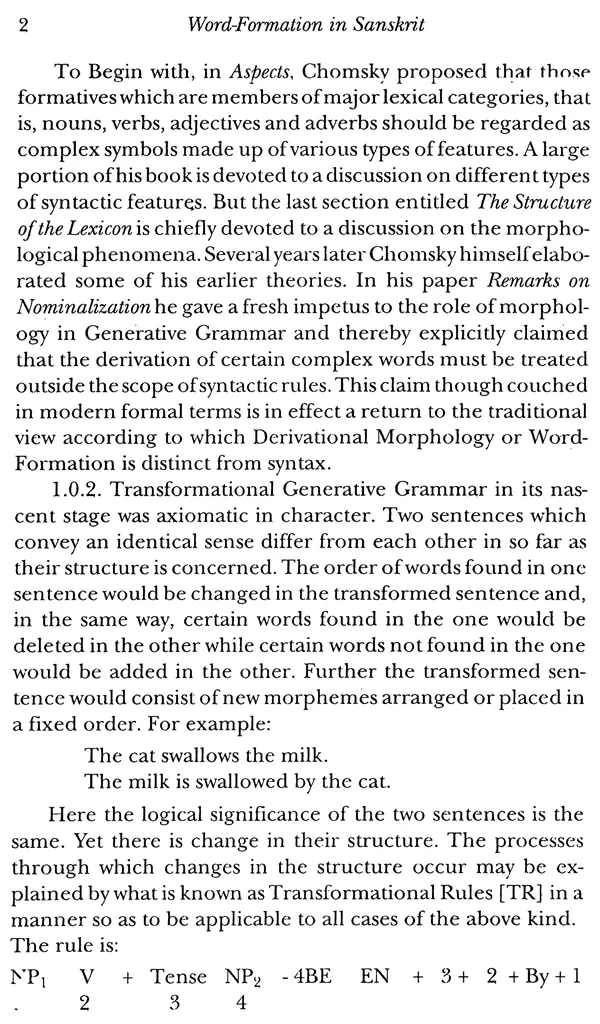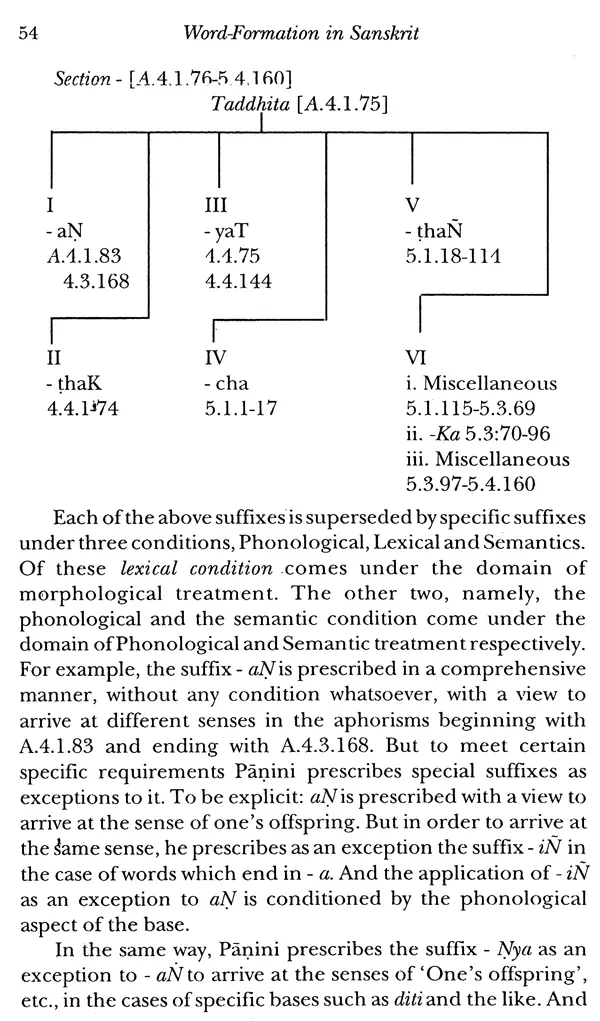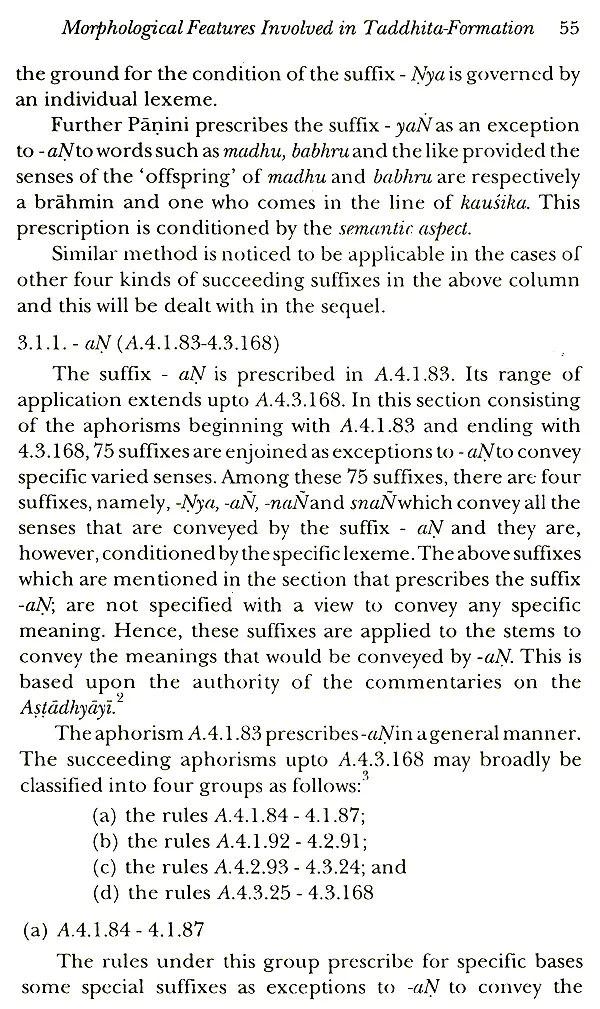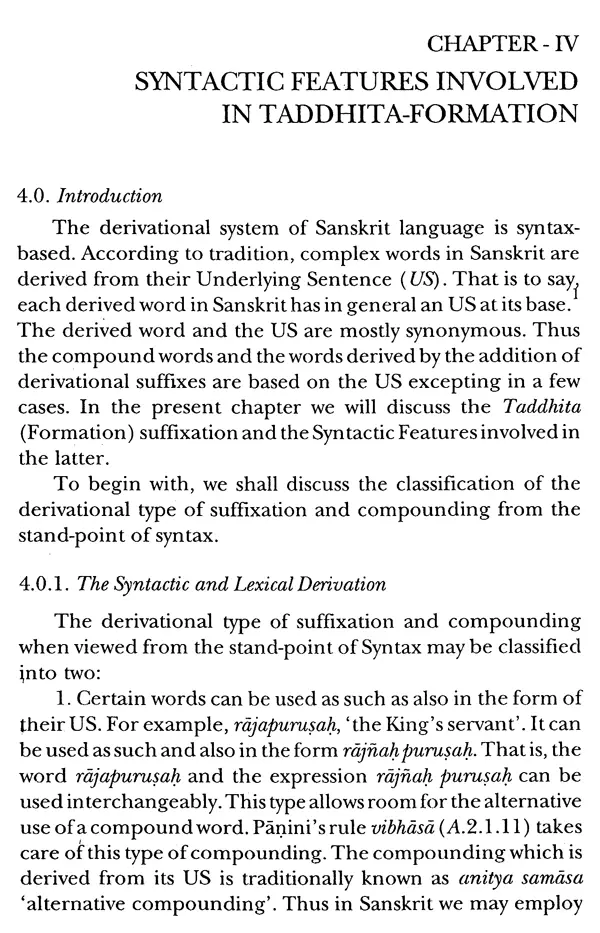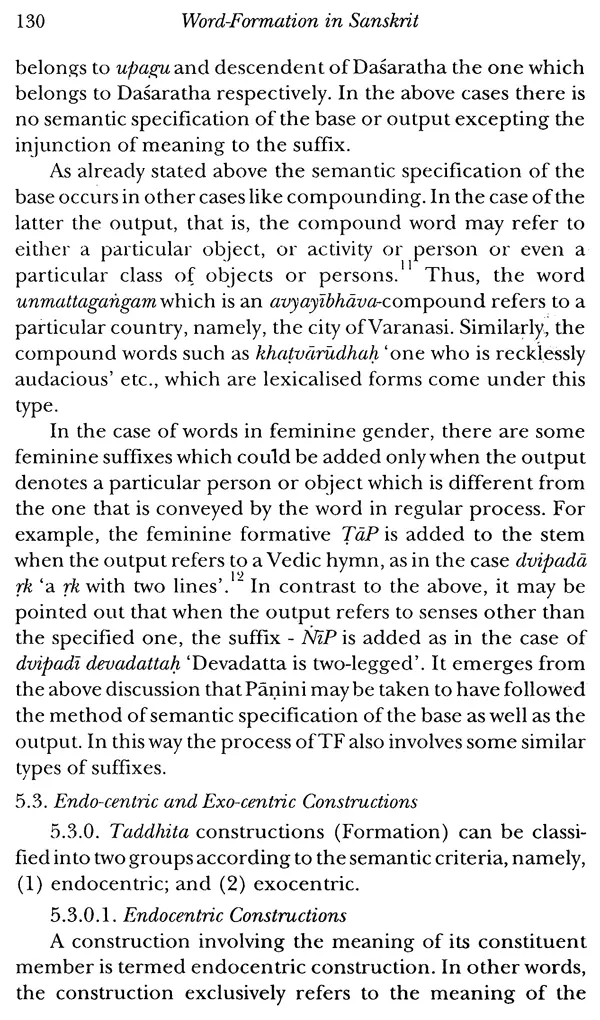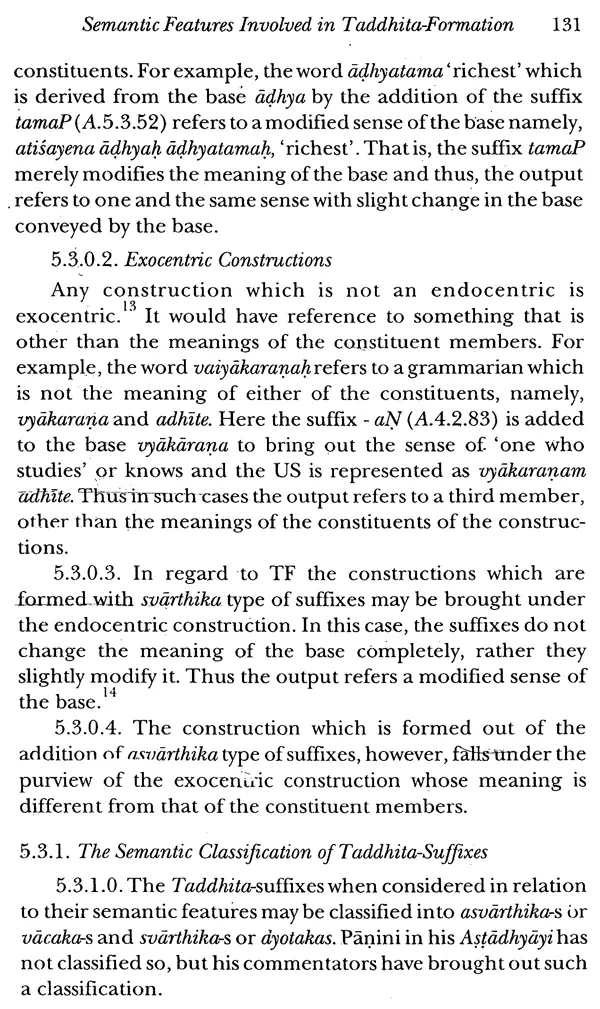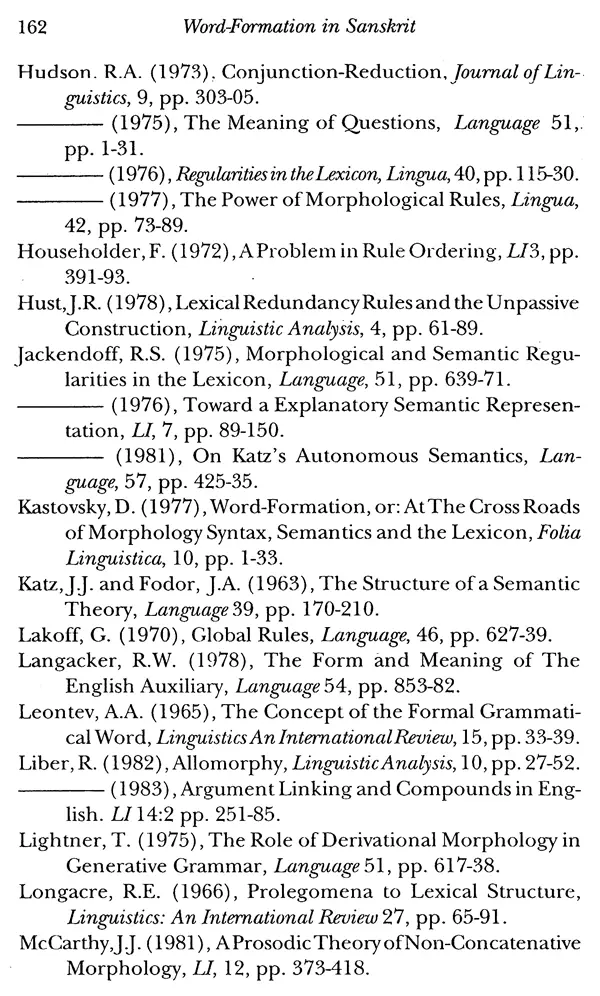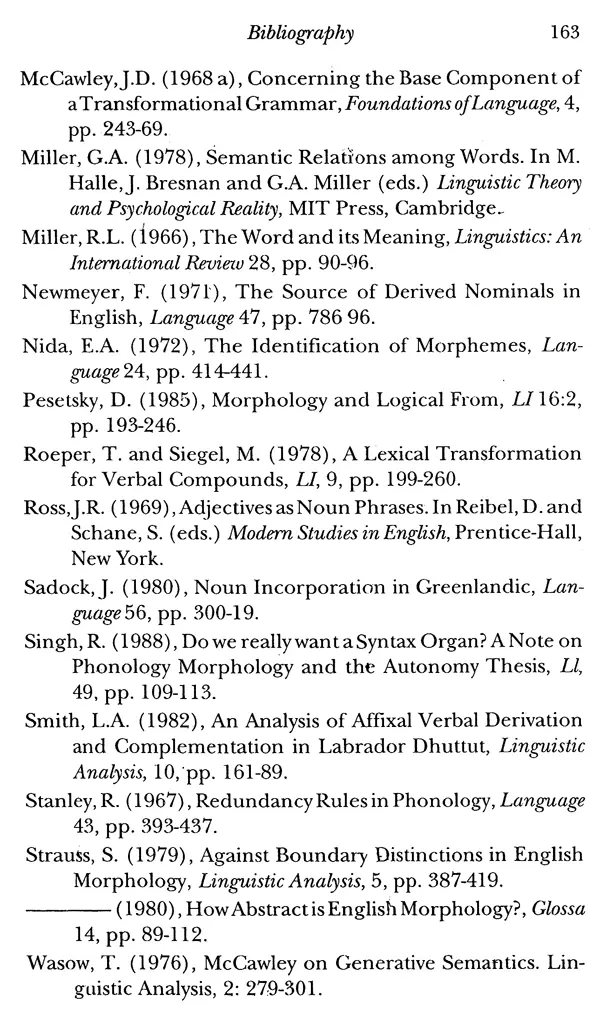
Word Formation in Sanskrit (With Special Reference to Taddhita Formation)
Book Specification
| Item Code: | UAG266 |
| Author: | G. Rangaranjan |
| Publisher: | Sharada Publishing House, Delhi |
| Language: | English |
| Edition: | 1999 |
| ISBN: | 8185616558 |
| Pages: | 168 |
| Cover: | HARDCOVER |
| Other Details | 9.00 X 6.00 inch |
| Weight | 380 gm |
Book Description
This book provides an introduction to Sanskrit Word-formation and a detailed study of Taddhita Affixation; and is modeled on the theory of Word Formation by M. Aronoff. It claims that a Word-Formation Rule should consist of four major linguistic features; namely, Phonology, Morphology, Syntactic and Semantics. The Taddhita Formation Rules are analyzed in relation to these features. The author also examines the different views of the scholars regarding the authenticity of the Taddhita-Formation Rules.
G. Rangarajan is a Visiting Assistant Professor in the Division of Languages and Linguistics at University of South Florida, Tampa, Florida, USA.
The present work represents the research work completed under the guidance of Dr. Siniruddha Dash, Prof., Department of Sanskrit, University of Madras. It is a study of Word-Formation in Sanskrit with special reference to the Taddhita-suffixation and is modelled upon the work-The Theory of Word-Formation by Aronoff.
I take this opportunity to express my thanks and deep sense of gratitude to the authorities of the University for the kind permission accorded to me to pursue my Ph.D Course in the Department of Sanskrit, University of Madras.
To the authorities of the UGC, I am grateful for providing me with the Junior Research Fellowship to carry on my research work.
I have great pleasure in writing a Foreword to this interesting doctoral thesis of Dr. G. Rangarajan, Visiting Assistant Professor, Division of Languages, University of South Florida, Tampa, U.S.A. prepared under the guidance of Professor Siniruddha Dash of the Department of Sanskrit, Madras University. It is a study of Word-Formation in Sanskrit with special reference to the Taddhita-suffixation; and is modelled on The Theory of Word Formation by M. Aronoff. The author is familiar with the basic works of Chomsky, and Lexicalist Hypothesis of Aronoff, Selkirk and others suggesting that the arguments proposed by Chomsky in his Remarks must be extended to all kinds of Derivational Morphology.
**Contents and Sample Pages**

